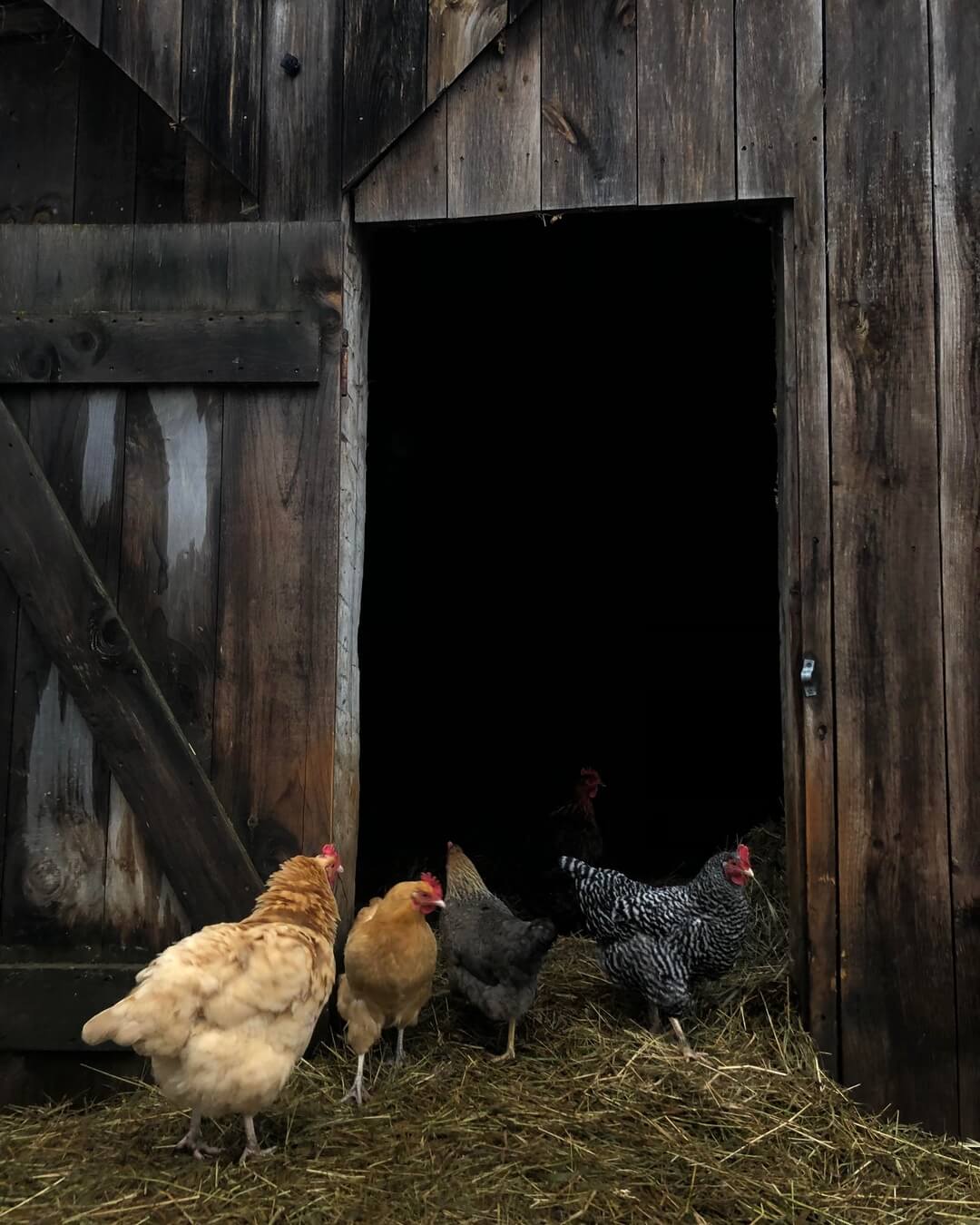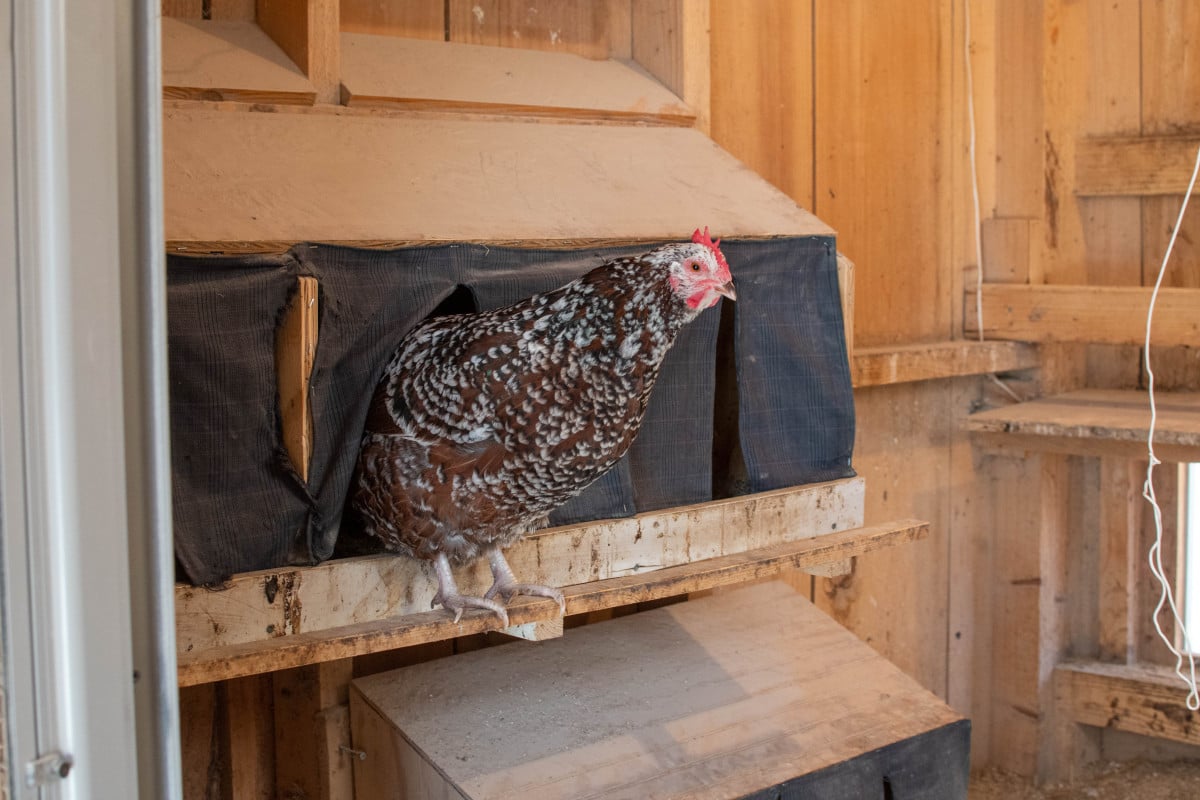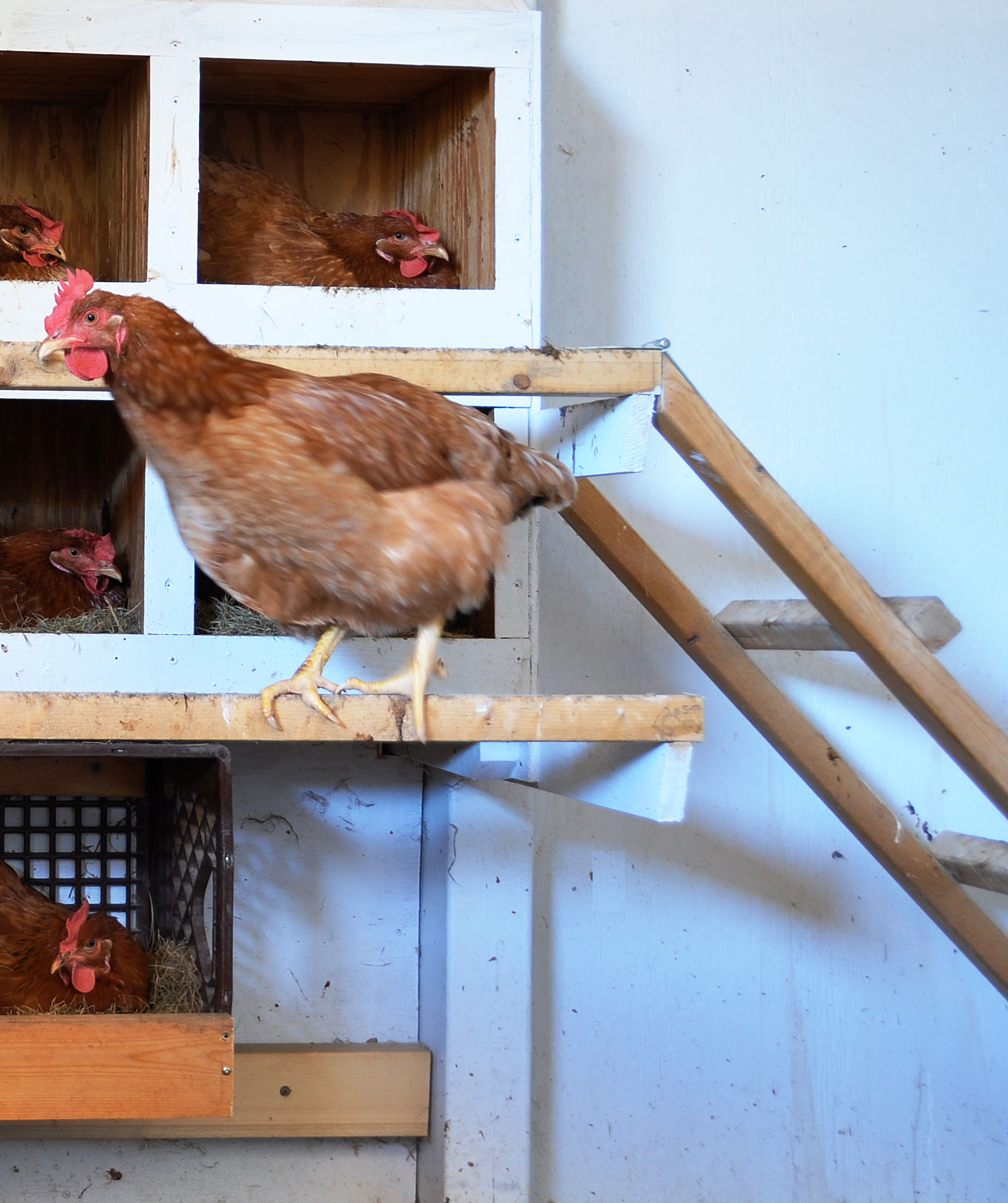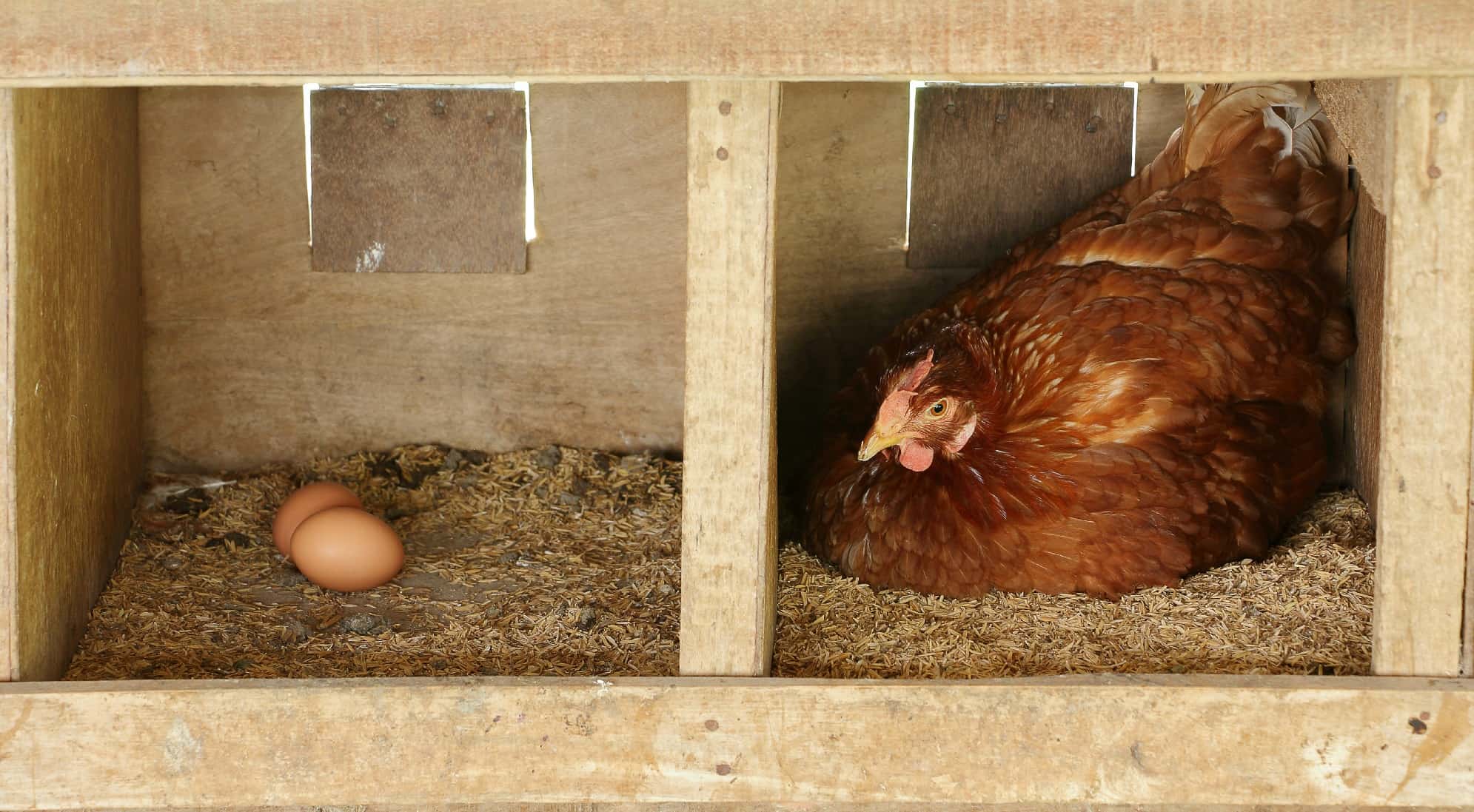Having the right chicken coop nests is essential for maximizing the efficiency of chicken husbandry. After all, a chicken coop nest is the place where chickens lay their eggs and rest. If a chicken coop nest isn’t designed properly, the chickens may not feel comfortable enough to lay eggs, which could reduce the efficiency of chicken husbandry. In this article, we’ll go over how to optimize chicken coop nests for maximum chicken husbandry efficiency. We’ll discuss the types of materials to use, the size of the nests, and other factors that can help make chicken coop nests more efficient.
Benefits of Optimizing Chicken Coop Nests

Increased Egg Production
Optimizing chicken coop nests helps improve egg production by providing a safe and secure area for hens to lay their eggs. Properly designed nests provide hens with the warmth and privacy needed to lay eggs in a more comfortable and productive environment.
Improved Hen Health
Optimizing chicken coop nests helps improve hen health by providing a comfortable and secure environment for hens to lay their eggs. Properly designed nests provide hens with the support and protection they need to lay eggs in a healthier environment.
Improved Brood Quality
Optimizing chicken coop nests helps improve the quality of the brood by providing a secure and comfortable environment for hens to lay their eggs. Properly designed nests provide hens with the warmth and support they need to lay eggs in a more productive environment, resulting in higher quality chicks.
Factors to Consider When Optimizing Chicken Coop Nests

Nesting Box Dimensions
A suitable nesting box should be big enough for a chicken to stand up in and turn around, but small enough that she feels secure. Generally, a nesting box for an average size chicken should measure 12 inches square and 12 inches tall. For larger breeds, the dimensions can be increased.
Nesting Box Placement
The nesting boxes should be placed in a quiet, dark corner of the coop, away from drafts and predators. The nesting boxes should be at least six inches off the floor and should not be placed too close together, as this can lead to squabbling among the hens.
Nesting Box Material
Nesting boxes should be constructed from a sturdy material that is easy to clean and maintain. Wood is a popular choice, as it is durable, easy to clean, and provides a comfortable surface for the hens. For added security, metal mesh can be used to line the nesting boxes and keep out predators.
Adding a few inches of clean straw or hay to the nesting boxes will make the hens feel more secure and provide extra comfort. The nesting material should be changed regularly to keep the nesting boxes clean and hygienic.
Setting Up the Nesting Box

Preparing the Nesting Box
The nesting box should be placed in a warm and dry place within the chicken coop, away from the roosts. Its entrance should be facing away from the prevailing winds to prevent cold drafts. The nesting box should be off the ground, preferably on a shelf or hanging from the coop walls. This can be achieved by mounting a board or a platform to the coop wall, and then placing the nesting box on top.
Installing the Nesting Box
Once the nesting box is ready, the next step is to install it. The box should be firmly attached to the wall or platform it is placed on. The box should also be secured in a way that it won’t be able to move or tip over. This can be done by using screws, nails, or any other type of fastening device.
Bedding Considerations
The bedding material placed in the nesting box should be clean and dry. The best bedding materials are straw, wood shavings, or hay. These materials should be changed regularly to maintain a clean and healthy environment for the chickens. Also, make sure to avoid materials that are too soft, as these can make the eggs difficult to collect.
Maintenance of the Nesting Box
Cleaning the Nesting Box
Regular cleaning of the nesting box is essential for efficient chicken husbandry. To ensure the nesting boxes are kept clean, they should be emptied of eggs and any old bedding material at least once a week. This should be done with a non-abrasive cleaner and a brush. If the nesting boxes are made of wood, they should be treated with a wood preservative to prevent moisture from entering.
Checking the Nesting Box
The nesting box should be inspected regularly for any signs of wear or damage. The box should be kept level and in good repair to prevent chickens from slipping or tripping. The box should also be kept free of debris, such as feathers or hay, to ensure a clean and safe environment for the chickens. A shallow tray of sand or gravel may be placed in the box to help keep it clean.
Frequently Asked Questions
What are the Benefits of Having an Optimized Chicken Coop Nest?
- Improved Egg Production: An optimized chicken coop nest helps in improving egg production as it offers a comfortable, safe and secure environment for the chickens to lay their eggs and provides ample space for them to move around.
- Reduced Stress: An optimized chicken coop nest reduces stress in chickens as it helps in maintaining a safe and cozy environment for them to rest and lay eggs. This helps in improving the overall health of the chickens and also reduces their vulnerability to diseases and parasites.
- Reduced Cost of Maintenance: An optimized chicken coop nest helps in reducing the cost of maintenance as it requires less frequent cleaning and maintenance. This helps in saving time and resources.
- Improved Sanitation: An optimized chicken coop nest helps in improving sanitation as it provides a clean and hygienic environment for the chickens to lay eggs. This helps in reducing the risk of diseases and parasites.
What materials should I use to build my chicken coop nest?
1. Plywood: Plywood is a great material for constructing chicken coop nests. It is durable, easy to work with, and relatively inexpensive. Additionally, plywood is naturally water-resistant and can be treated with waterproof sealants to further protect it from moisture.
2. Chicken Wire: Chicken wire is a common material used for constructing chicken coop nests. It is important to use a mesh size that is large enough for the chickens to gain access to the nest, but small enough to deter predators.
3. Straw or Hay: Straw or hay is a great material to line the bottom of the chicken coop nest. It provides insulation and comfort for the chickens and is also a great way to absorb moisture.
4. Wood Shavings: Wood shavings are a great material to line the bottom of the chicken coop nest. They provide insulation, absorb moisture, and are easy to clean.
5. Plastic or Rubber: Plastic or rubber is an excellent material for constructing chicken coop nests. It is waterproof, easy to clean, and provides insulation. Additionally, it is non-toxic and will not harbor bacteria or mold.
What Size of Chicken Coop Nest is the Most Efficient?
The size of a chicken coop nest is an important factor in maximizing chicken husbandry efficiency. An ideal chicken coop nest should be big enough for the chickens to move around and lay eggs, but small enough to reduce the amount of space wasted. Generally, a chicken coop nest should be no more than 18 inches (45 cm) wide and 12 inches (30 cm) deep. This allows the chickens to lay eggs without feeling cramped and reduces the amount of space needed to store the eggs. Additionally, the nesting material should be kept clean and replaced regularly to ensure the health and safety of the chickens.
How often should I clean and maintain the chicken coop nest?
Regular Maintenance:
- Clean the nest box(es) at least once a month.
- Check the nesting material and replace, if necessary.
- Check the bedding material and replace, if necessary.
- Check that the nesting material is free from parasites and disease.
- Check that the nesting material is free from debris.
Extra Cleaning:
- Deep clean the nest box(es) at least once a year.
- Clean and disinfect the box(es) with a suitable cleaning agent.
- Replace the nesting material and bedding with fresh material.
- Check for any signs of wear and tear and repair as necessary.
Is there a specific way to design the chicken coop nest for maximum efficiency?
Yes, there is! To optimize chicken coop nests for maximum chicken husbandry efficiency, it is important to consider the following factors:
- Size of the Nest – The size and depth of the nest should be appropriate for the breed of chickens. In general, the nests should be at least 12 inches wide and 12 inches deep, with 4 to 6 inches of bedding.
- Location of the Nest – The nest should be located in a quiet, dark and draft-free area. It should be away from direct sunlight and not too close to the chicken feeders, as this can create a distraction.
- Materials Used – The materials used to construct the nest should be sturdy and easy to clean. Wooden and plastic materials are most commonly used.
- Number of Nests – The number of nests should be appropriate for the size of the flock. Generally, one nest per four hens is recommended.
- Perch – A perch should be provided for the chickens to rest upon. This should be located just above the nest so that the chickens can easily access it.
By following these guidelines, chicken farmers can ensure that their nests are designed for maximum efficiency and productivity.
Conclusion
Chicken coop nests are an essential part of any poultry farming operation. They provide a safe, comfortable, and healthy environment for chickens to lay eggs and grow. By optimizing the design and construction of the nests, poultry farmers can ensure the highest level of efficiency in their chicken husbandry. Properly built and maintained chicken coop nests will help ensure the best possible results for the poultry farmer and their chickens.
